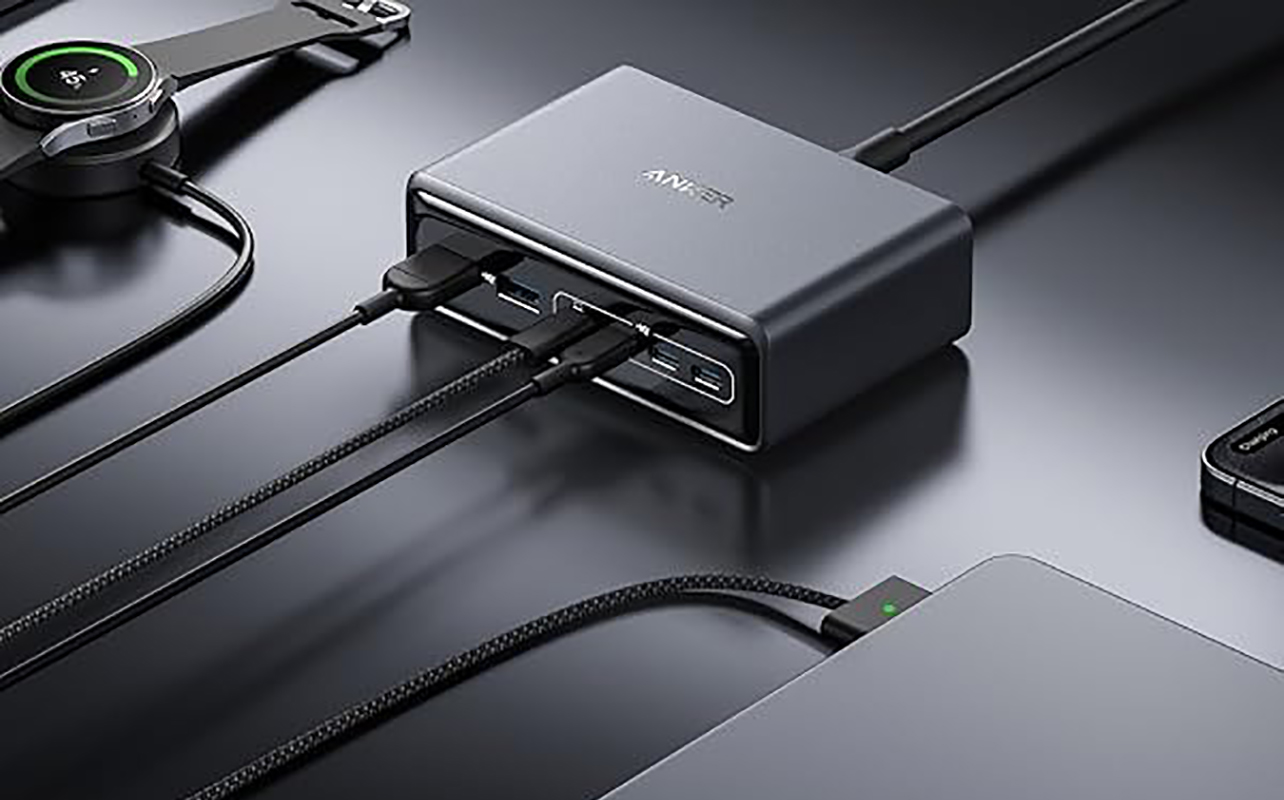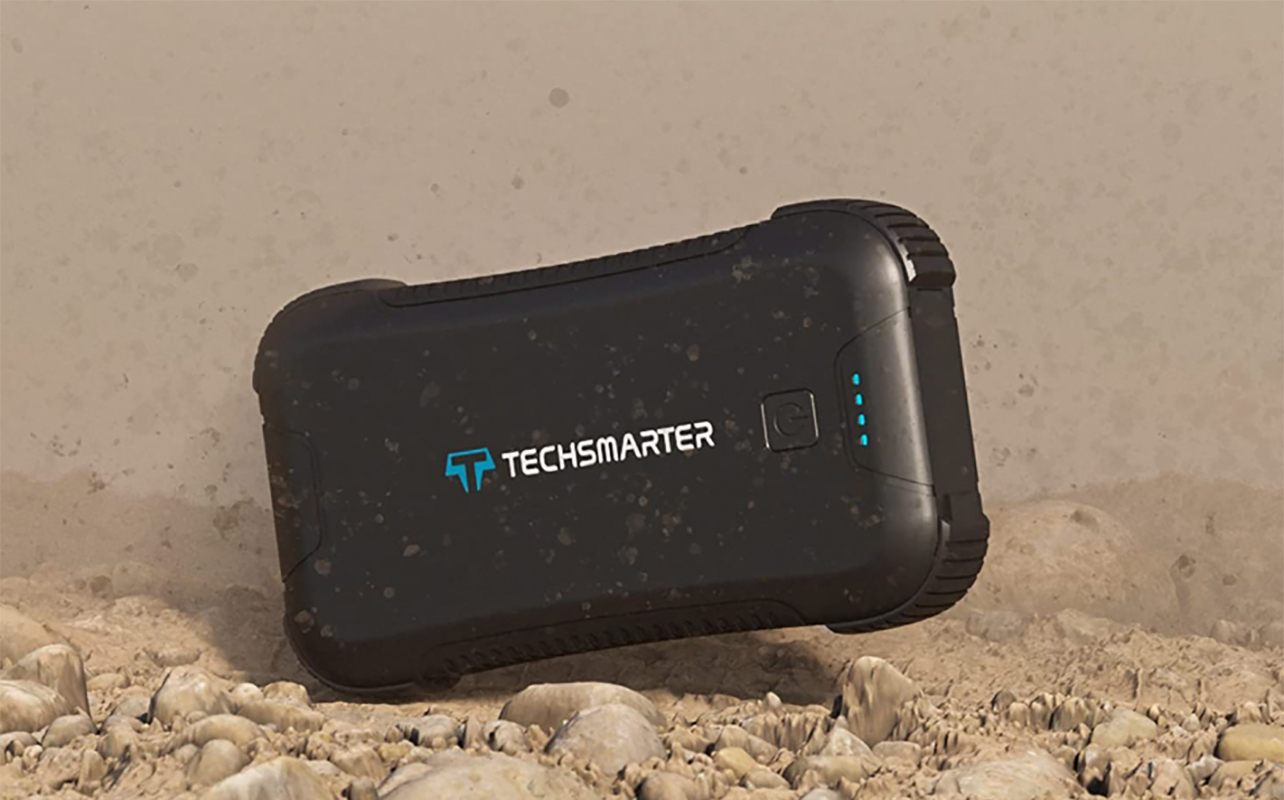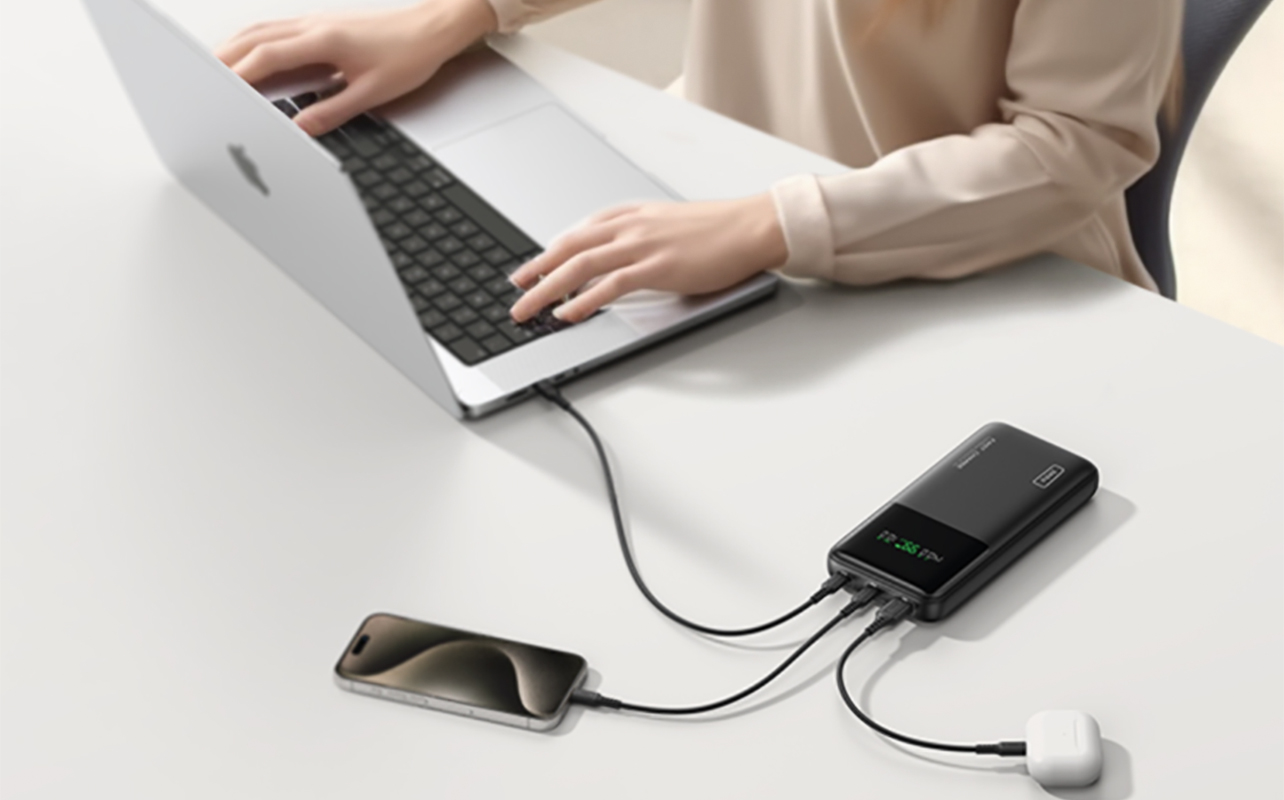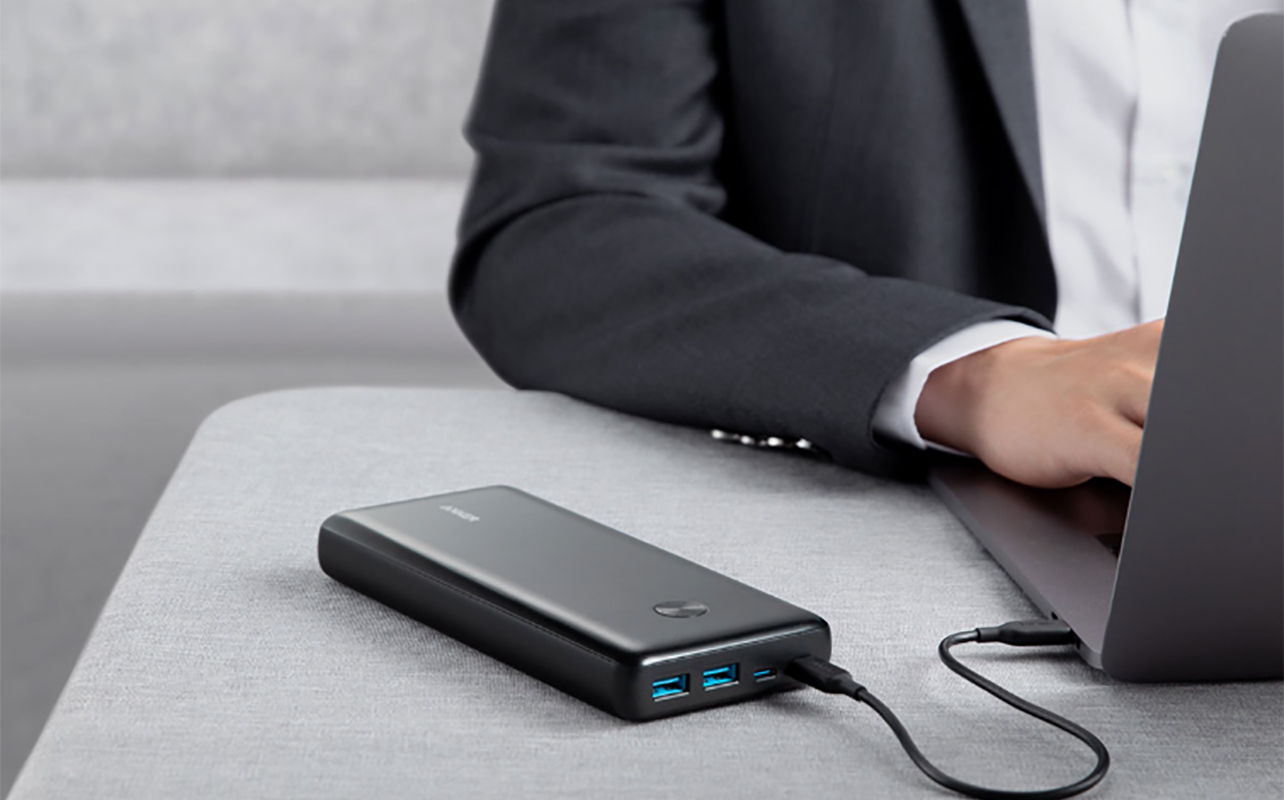
In a world where working remotely, studying on the go, and travelling light are increasingly part of everyday life, the idea of topping up your laptop’s battery without needing a wall outlet is more appealing than ever. But can you really charge a laptop with a power bank? The short answer is yes. But that’s only if you have the right kind of power bank and a compatible device. In this guide, we’ll walk you through what to look for in a laptop power bank, how to know if it will work with your specific laptop, and when it makes sense to invest in one.
Why people want to charge their laptop on the go

There are many types of people who would want or need to charge their laptop on the go, like a student spending long days on campus, a professional hopping between meetings, or a frequent traveller dealing with layovers and limited outlets. Battery anxiety is real. Public charging ports can be scarce or unreliable, and traditional wall chargers aren’t always convenient. A laptop power bank offers portable peace of mind, letting you stay connected no matter where you are. For anyone working in coffee shops, libraries, airports, or outdoor settings, it becomes a handy backup tool.
Can a power bank actually charge a laptop?

As noted, a power bank can charge a laptop, but not all power banks are created equal. Most standard power banks are built to charge smartphones, tablets, Bluetooth headphones, and other portable devices. Charging a laptop, however, requires a power bank that supports USB-C Power Delivery (PD) and has sufficient wattage output. Laptops typically need anywhere from 30W to 100W+ to charge effectively.
So, if your power bank only has a USB-A port and offers 12W output, it likely won’t be enough. For laptop charging, look specifically for high-wattage portable chargers that support USB-C PD, like those rated at 65W or 100W.
What to look for in a laptop-compatible power bank

Choosing the right USB-C power bank for laptop charging isn’t just about capacity. There are other key factors to consider.
Wattage output
Ensure the power bank offers at least 30W, but ideally 65W or 100W, especially for larger laptops. This ensures it can provide enough power to not only maintain the charge but also replenish it efficiently. Keep in mind that this means the charger will probably be a bit heftier than a typical portable charging bank. But it’s worth it to sufficiently power your laptop on the go.
USB-C Power Delivery (PD) support
Power Delivery is the standard used to safely charge high-power devices like laptops and tablets. Make sure the power bank supports USB-C PD and that your laptop does as well.
Capacity (mAh or Wh)
Higher capacity means more available power. A capacity of 20,000mAh or more is ideal for laptops. Always check the Wh (watt-hour) rating for a better estimate of how much runtime you can expect. The higher the capacity, the more charge you can get of your laptop per charge of the power bank.
Number of ports
Having multiple output ports lets you charge more than one device simultaneously. If you’re planning to top up your laptop and phone at the same time, look for at least one USB-C and one USB-A port.
Airline compliance
Planning to travel? Keep in mind that airlines usually restrict lithium batteries to 100Wh or under for carry-on. Many laptop-compatible power banks are designed with this limit in mind, so you shouldn’t have to worry. But it’s worth double checking to ensure you can bring the portable power bank on a plane.
Best use cases for laptop power banks

A high-wattage portable charger can come in handy in several real-world scenarios:
- Travelling: Stay productive during long flights, layovers, or train rides without worrying about finding an outlet.
- Students on campus: Go from class to library to study session without needing to search for plug-ins.
- Outdoor or remote work: Whether you’re camping, working in a park, or shooting content outdoors, a power bank provides reliable laptop battery backup.
- Emergencies: Keep your laptop usable during power outages or while off-grid. Note that if you need something with even more power for extended outdoor events like a camping trip or in case of emergencies, you might prefer to look at portable power stations instead.
Laptops that work well with power banks

Not all laptops can be charged via USB-C. Compatibility largely depends on if your device supports USB-C PD charging. Below are the most common laptop types that work well with USB-C power banks:
MacBooks (USB-C models)
Most MacBook Air and MacBook Pro models from 2016 onward support USB-C charging and work seamlessly with high-wattage power banks. If you’re looking to charge your MacBook with a power bank, make sure to check if your model supports USB-C PD.
Chromebooks
Most recent Chromebooks use USB-C ports for both data transfer and charging. Their relatively low power requirements make them especially efficient to charge with a USB-C power bank for laptop use.
Windows laptops with USB-C PD support
Ultrabooks like the Dell XPS, HP Spectre, Lenovo Yoga, Microsoft Surface Laptop 5, and other premium thin-and-light Windows laptops often support USB-C PD charging. These are great candidates for portable charging, especially with high-wattage portable chargers.
Important Note: Larger gaming laptops or older laptops may not be compatible or may require very high wattage (100W+), which not all power banks can deliver.
Common misconceptions and what to avoid

When it comes to charging a laptop with a power bank, there’s no shortage of confusion. Let’s take a closer look at the most common myths and clarify what you should really be watching for.
Not all power banks can charge a laptop
It’s a popular belief that any power bank can do the trick, but that’s not true. To charge a laptop properly, the power bank must support USB-C Power Delivery (PD) and deliver sufficient wattage. Without these specifications, the power bank simply won’t provide the power your laptop needs, or it may charge incredibly slowly, if at all.
Charging while gaming or video editing? Not quite
Another common assumption is that you can run demanding tasks like gaming or video rendering while charging your laptop via a power bank. In reality, even high-wattage power banks may only maintain the battery level during these intensive operations. They may struggle to replenish the battery when the laptop is drawing significant power. So, you’re best off to stick to less intensive activities to let the laptop charge while you work, like checking e-mails, surfing the web, or word processing and other light productivity tasks.
USB-A cables won’t cut it
Many users assume that any USB cable will do. However, USB-A to USB-C cables generally can’t deliver the power output required to charge a laptop effectively. Always use a USB-C to USB-C PD-certified cable to ensure safe and efficient charging. Using the wrong cable could limit charging speed or worse, fail to charge altogether.
Bigger isn’t always better
Some may think that a higher-capacity power bank is automatically the best choice. While large-capacity models offer more charge cycles, they also tend to be bulkier and may exceed airline limits. For portability and travel, aim for a model under 100Wh that balances output and convenience. You might not be able to recharge your laptop to full, but you’ll get enough juice to keep you going until you get to your destination or a power outlet.
By understanding these key differences and avoiding the common traps, you’ll make a smarter, safer decision when shopping for your next laptop power bank.
Shop power banks for laptops at Best Buy Canada

If you’re ready to buy, Best Buy Canada offers a curated selection of USB-C power banks for laptop use. Look for models with 65W or higher output and high-capacity batteries, such as:
- Anker Prime: 20,000mAh with massive 200W total output
- Anker PowerCore III Elite: 25,600mAh with 87W output
- INIU power bank: 20,000mAh with 65W output
These are ideal for students, professionals, and travellers looking for a reliable laptop battery backup.
Final thoughts: Is a laptop power bank worth it?

If you value mobility, reliability, and peace of mind, a laptop power bank is a solid investment. Whether you’re powering through a school day, a flight delay, or an outdoor work session, the right portable charger ensures your productivity doesn’t get interrupted.
Just remember: not all laptops are compatible with all power banks, and not all power banks are created equal. Stick with high-wattage portable chargers that support USB-C PD, match your device’s requirements, and come from reputable brands. That way, you’ll always be ready, even when the nearest outlet is nowhere in sight.
Shop a wide selection of power banks at Best Buy Canada, including many models that meet the specifications for charging a compatible laptop.
This article was drafted using AI technology and then reviewed, fact-checked, and revised by a member of our editorial team.





